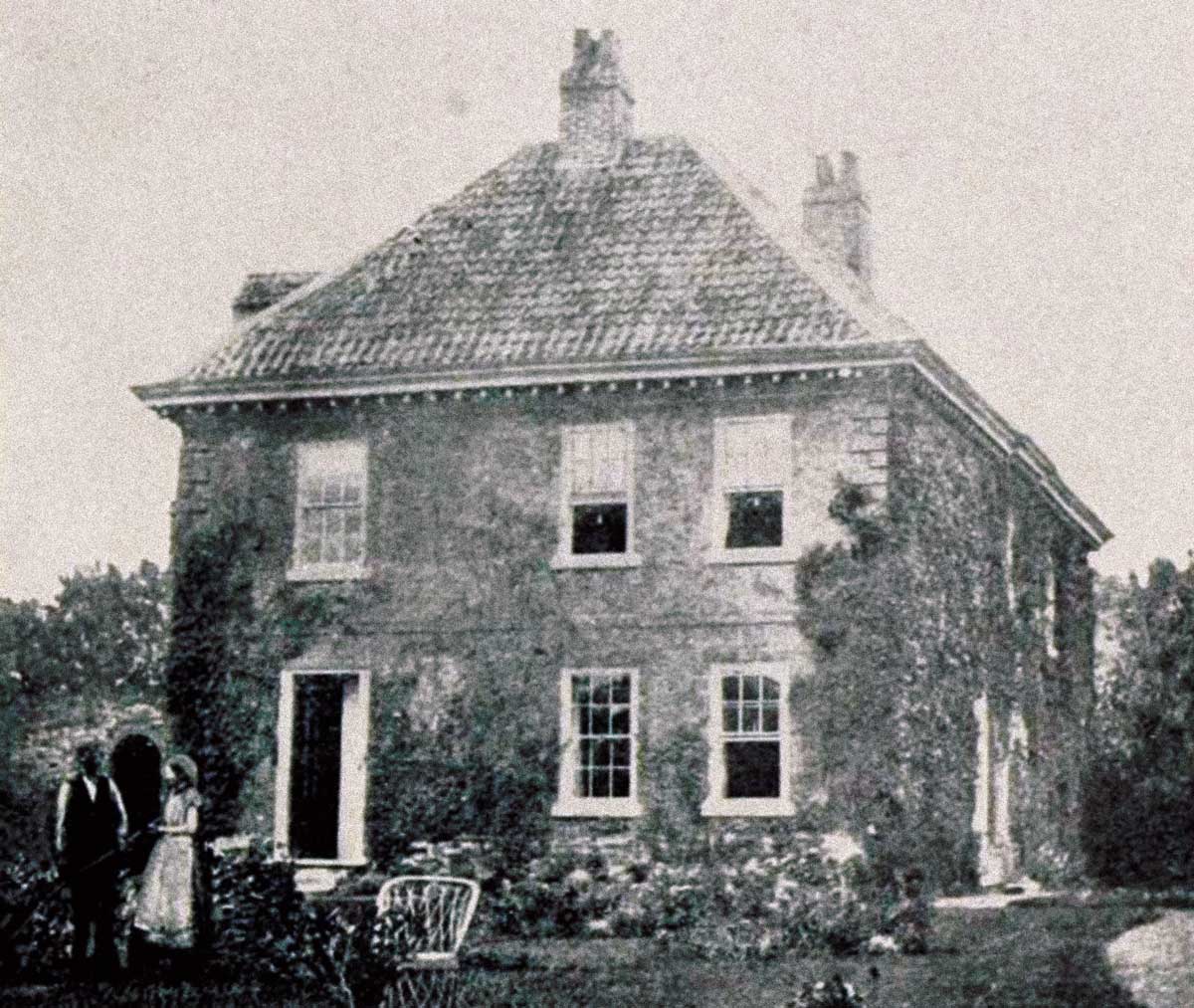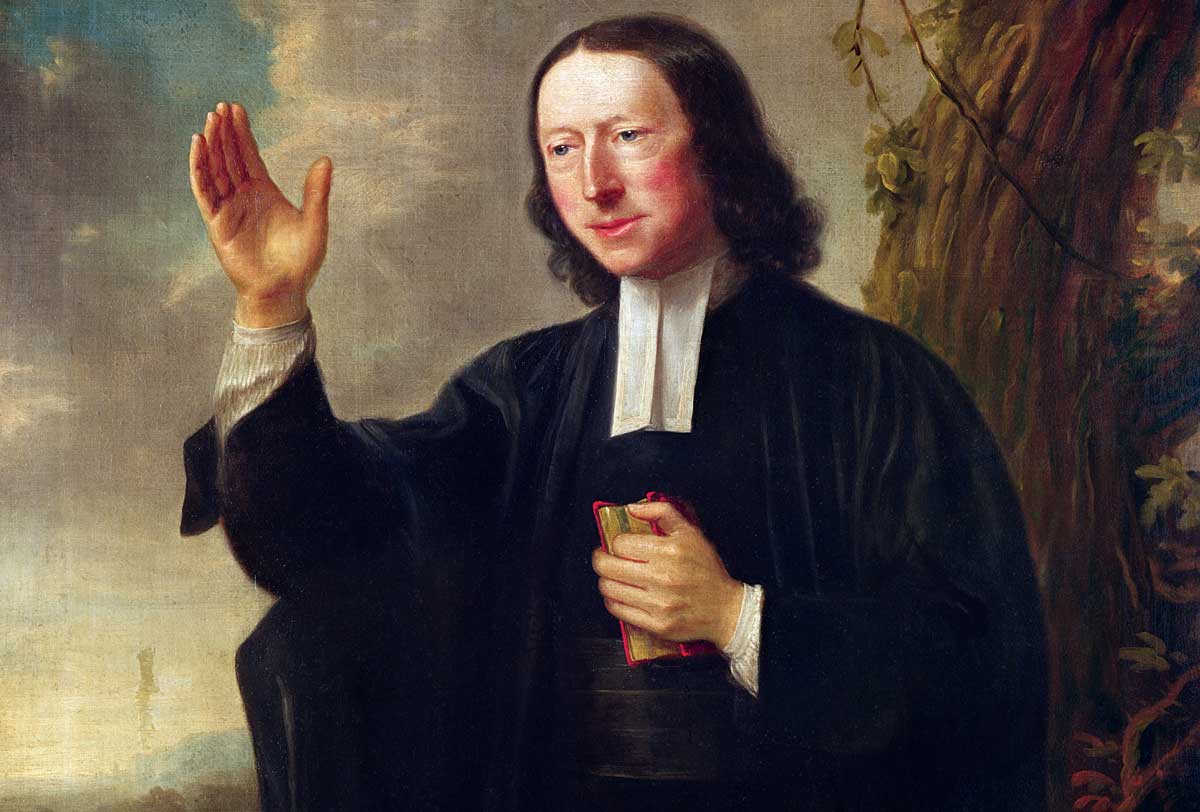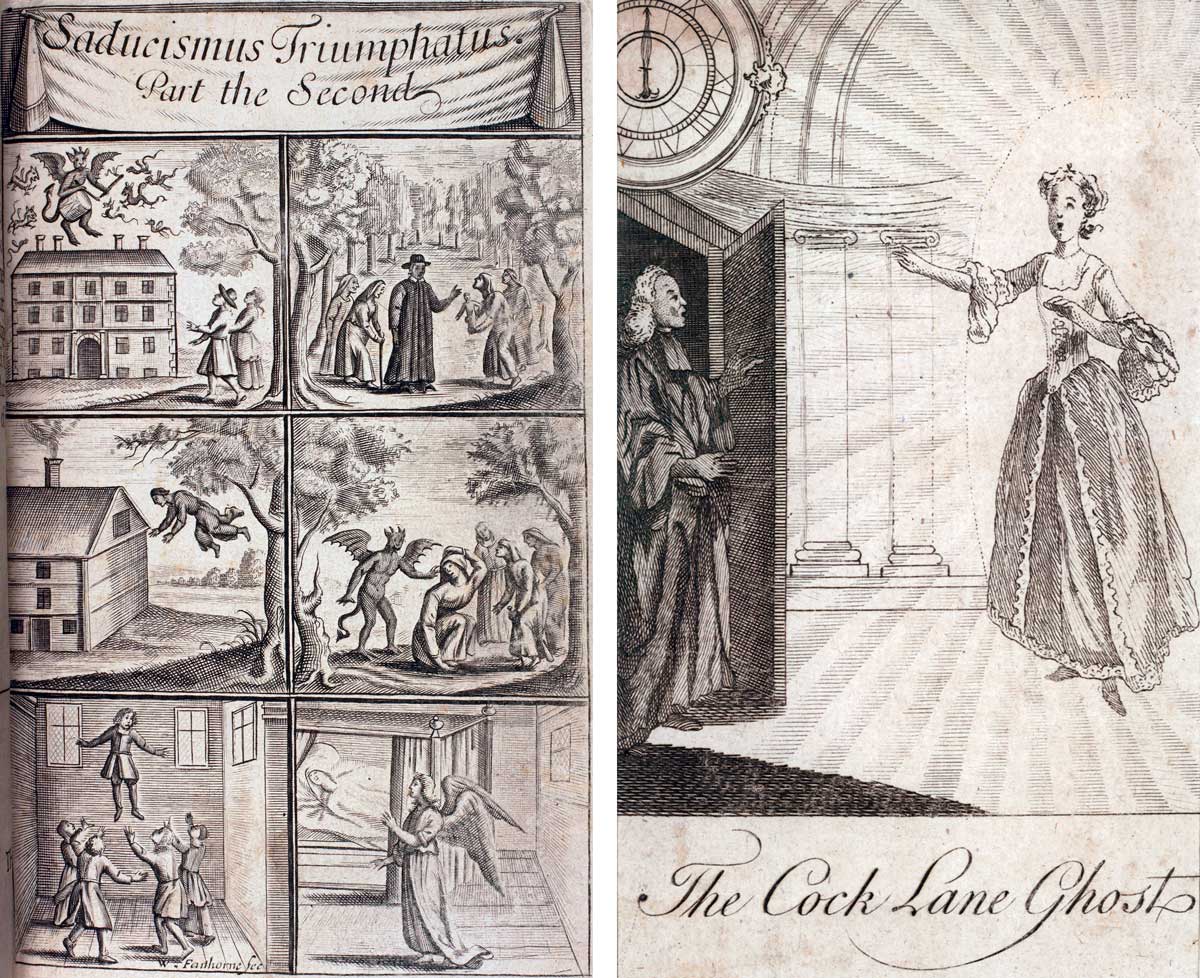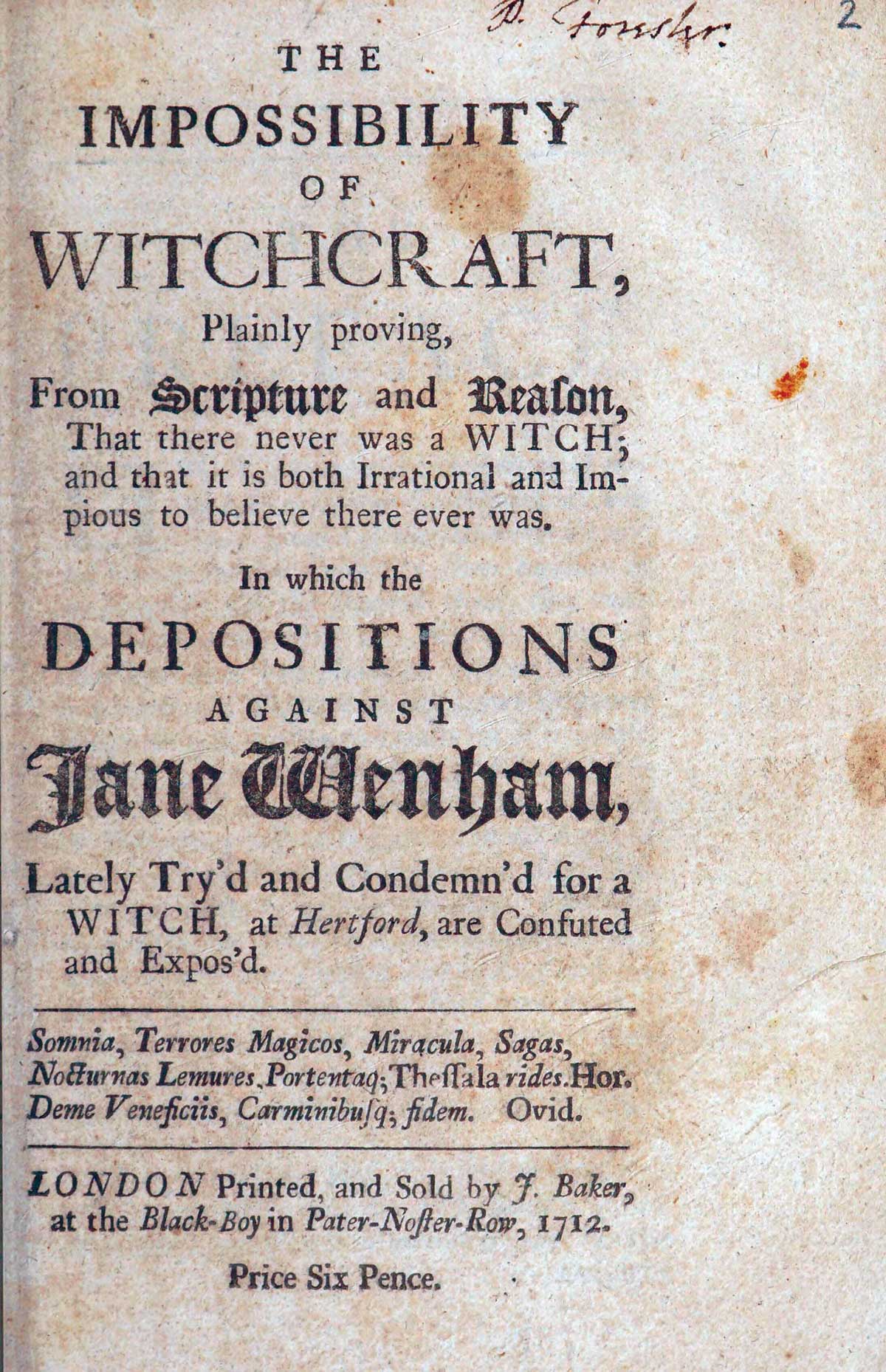cultură şi spiritualitate
A polarising poltergeist sowed division in 18th-century England.
https://www.historytoday.com/archive/feature/paranormal-politics

Epworth Rectory, 19th century. Alamy.
On the first day of December 1716 one of the Wesley family’s maids heard groans in the rectory. She described them as sounding like someone on the point of death. It was the first appearance of the ghost that for four months would haunt the rectory at Epworth in Lincolnshire, where Samuel Wesley, father of John and Charles, the founders of Methodism, was rector. In the days that followed, the family, including eight children at home, all heard knockings, usually in the nursery. At first, Samuel was the only family member who did not hear it; Susanna, his wife, feared this meant that it might be a warning of his impending death. Susanna also wondered whether it was a sign that her two sons, who were at school in London, were in danger.
When Samuel did eventually hear the sounds, they seemed to intensify. Headboards knocked, furniture rattled, doors banged, there were grinding and grating sounds around the house and apparitions of small animals. People in the house were pressed against walls by an invisible force. Yet, from the start, the children seemed unafraid of the phenomenon: Emilia Wesley nicknamed it ‘Old Jeffrey’ after an old man who had died in the house. Much of the activity seemed to focus on Hetty (Mehetabel) Wesley, perhaps the liveliest and most talented of the daughters. Samuel joked that it would make a good ‘penny book’ for his brother-in-law, the publisher John Dunton. The seven sisters said that when Jeffrey knocked it was time to go to bed. The servants, on the other hand, were terrified by the phenomenon, as were the family dog and the parishioners of Epworth.
Jacobite spirit?
The Epworth Rectory ghost is well documented. Samuel Junior and John, the children in London, wrote to their siblings and parents asking for detailed accounts of the phenomenon. More than a dozen letters to them describe what was happening. In addition, accounts were given by servants and by visiting friends, including another local parson, Mr Hoole, all of whom reported the same pattern of knocking and tapping.
Susanna seems to have been the most troubled by it. She wondered whether it might be the spirit of one of her dead children trying to communicate with her. After 19 pregnancies, 11 of her children had survived to adulthood, so perhaps one of the eight children she had lost in childbirth or infancy was the source of the noises. She bought a horn and had it blown throughout the house to frighten the spirit away, but to no avail. Samuel’s response was one of irritation; he shouted at the spirit when it rattled loudly, hit his stick against the wall and once thought of firing a pistol at it. He also tested it: sometimes he tried a single knock followed by five in quick succession and then a seventh and, although he did not hear the spirit answer, the children sometimes did.

John Wesley, c.1766, by Nathaniel Hone the Elder © National Portrait Gallery, London/Bridgeman Images.
More curious was that Samuel Wesley noted a singular feature of the knockings. He realised that ‘Old Jeffrey’ knocked especially loudly at family devotions that included a prayer for the new king, George I. On one occasion, when he deliberately omitted prayers for the king, ‘Old Jeffrey’ stayed silent. Samuel concluded that the spirit was a Jacobite who favoured the restoration of the Stuarts. John, in later years, regarded politics as the key to the episode. In 1785 in his Methodist publication, the Arminian Magazine, he gave an account of the haunting. He linked it to a breach in his parents’ marriage, which had taken place in 1701. Susanna had refused to say ‘amen’ at the end of prayers for the king, William III, because – as she told Samuel – she did not believe he was the rightful king, having displaced James II in 1689. Susanna’s Jacobite views shocked Samuel and he swore an angry oath not to live with her until she recanted. He would not share a bed with her, saying: ‘If you and I have two kings, we must have two beds.’ He left the parish for almost a year, during which time he lived in London. Susanna consulted various Jacobite friends who agreed that she was in the right; nevertheless, they advised her to submit to her husband.
In the end, it seems that some sort of reconciliation happened. Samuel returned to Lincolnshire and they lived and slept together, having at least four more children. But the breach was never fully healed. Susanna continued, privately, to hold Jacobite opinions and only grudgingly accepted Samuel’s authority. He remained annoyed that she did not obey him unconditionally. On at least two further occasions the simmering tensions between them spilled over. John believed that his father had returned to live with Susanna despite the fact that she had not fully submitted to him and he had therefore broken his oath. This, John thought, was the source of ‘Old Jeffrey’, a messenger from Satan sent to ‘buffet’ his father for failing to keep his promise.
Divine judgement
The haunting was well known and often discussed. In the 1790s Joseph Priestley, the Unitarian scientist, adopted a rationalist approach and wrote that he believed the Wesleys had been tricked by a family servant. The poet Samuel Taylor Coleridge believed that it might have been caused by hallucinations after eating grain infected by yeast bacteria. The most elaborate explanation was advanced by John Overton, rector of Epworth in the 1880s, who thought that machinery was winched into the attics to cause the sounds. But for John there was no doubt that the episode was entirely supernatural. He was convinced of the existence of witches and ghosts, claiming that to deny their existence was to contradict the Bible.
John Wesley recalled that he came from a Tory family. His father had become a Tory High Churchman after conforming to the Church of England in 1684 and Susanna shared his Toryism, though not his views on the monarchy. Later on, John was also to proclaim himself a Tory High Churchman. For such a family, the supernatural was not only real but incontrovertible evidence of the truth of their faith. In contrast, for Whigs, new scientific explanations of the paranormal were more appealing. Consequently, most instances of the supernatural in this period were occasions for political dispute. Earlier in 1716 the appearance of the Northern Lights as far south as London stimulated differing views. Whigs argued that this was simply a scientific event; Tories feared that the lights were divine judgement on the execution of the leaders of the recent Jacobite uprising and nicknamed them ‘Lord Derwentwater’s Lights’ after the young Jacobite Earl of Derwentwater, who had been executed in February 1716.

Left: Six frames depicting supernatural activities, from Joseph Glanvill’s Saducismus Triumphatus, 17th century. Alamy. Right: ‘The Cock Lane Ghost’, English 19th-century engraving © Bridgeman Images.
Samuel believed firmly in the existence of witches. As a young parson, he had written a column in the Athenian Mercury for his brother-in-law, John Dunton, in which he answered readers’ queries. On more than one occasion he wrote that the existence of witches was ‘beyond controversy’. Readers wrote in with accounts of hauntings and paranormal experiences. In 1716, before the haunting of his rectory, Samuel Wesley heard of witch activity in Epworth and in his sermons warned against experimenting with witchcraft and magic.
Only four years before the haunting the trial of Jane Wenham, the last woman in England to be convicted of witchcraft, took place in Hertfordshire. The trial was marked by political division: Wenham’s prosecutors included two Tory clergy, while the jury was composed of villagers influenced by their Tory landowners. The judge, Sir John Powell, was a moderate man who was clearly doubtful of the evidence against Wenham. He even invited the jury to acquit her of the charge. When they convicted her, Powell sentenced her to death but stayed the execution and recommended Wenham to the queen for a pardon, which was granted. The Wenham case was a sensation, with pamphlets and books written by both Whigs and Tories.
Dubious disturbances
The Wesley family also knew the Mompessons of Wiltshire, owners of the house that a poltergeist had haunted more than 50 years earlier. In the 1660s the ‘drummer of Tedworth’ knocked and thumped in the house of John Mompesson and attracted the attention of Samuel Pepys and Christopher Wren. Even Charles II sent two men to investigate. In the wake of the Tedworth drumming, Joseph Glanvill wrote Saducismus Triumphatus, a forthright defence of the existence of witches and the supernatural. In the end it was assumed that the episode was a hoax, but in 1716 the Whig writer Joseph Addison published a play called The Drummer, which claimed that the drumming was simply the actions of a returning veteran who wanted to scare off a suitor from his wife. At the same time, John Wesley heard from his elder brother, Samuel, then an undergraduate at Christ Church, Oxford, that Mompesson’s son, also at the university, had told him the truth. Apparently, the drummer was genuine and there was no hoax; but John Mompesson had allowed the matter to drop because he was exhausted by the number of visitors. John Wesley wrote that he knew that the haunting was true. His journal and issues of the Arminian Magazine often contained accounts of supernatural events and manifestations. Wesley even ascribed the success of his evangelical movement to supernatural agency.

Frontispiece of The Impossibility of Witchcraft, 1712. Wellcome Images.
The Whig view was that there were scientific and rational explanations for most supernatural events. Of these, one of the most disconcerting for John Wesley was the ‘Cock Lane Ghost’ of 1762. This was another case of knockings and rattlings. The ghost, which manifested itself in seances with Elizabeth Parsons and her father Robert, was soon revealed to be a hoax. Those who had defended the phenomenon as genuine, including Wesley, were embarrassed. Among those who exposed the Parsons as tricksters was the Whig, George Macaulay. The poet Robert Southey referred to John Wesley’s willingness to believe in the paranormal as ‘voracious credulity’, which could be traced back to the Epworth haunting. In 1763 the radical John Wilkes thought the willingness of some to believe in the knocking and noise caused by the Cock Lane Ghost showed that the divisions over the supernatural were partly political in nature.
The Epworth poltergeist fell silent in March 1717, but ‘Old Jeffrey’ remained a point of reference for the Wesley family. They wrote to one another that ‘Old Jeffrey’ could not prevent them from achieving their goals; troubles and tribulations were sometimes dismissed as a visitation from him. While this episode was remarkable, it was common for the supernatural to be politicised and the Wesleys were representative of the wider social conception of the paranormal as the preserve of Tories.
William Gibson is Professor of Ecclesiastical History at Oxford Brookes University. His latest book is Samuel Wesley and the Crisis of Tory Piety, 1685-1720 (Oxford University Press, 2021).
Adaugă un comentariu
© 2024 Created by altmarius.
Oferit de
![]()
Embleme | Raportare eroare | Termeni de utilizare a serviciilor













Pentru a putea adăuga comentarii trebuie să fii membru al altmarius !
Alătură-te reţelei altmarius